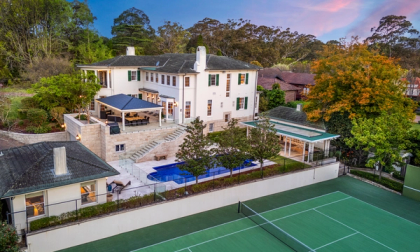
What impact will the Government's housing policies have on real estate markets?
In the lead up to the election, housing affordability became a major campaign issue, with the major parties making promises about how they would deal with an increasingly inaccessible market and a dearth of adequate social housing to service those that most need it.
Now with Labor forming a majority government how are our property markets likely to be affected?
I’d like to unpack two of Labor’s major policies and see what they could mean for the market before taking a brief look at what the next 6-12 months hold with Prime Minister Albanese at the reins.
The Help to Buy scheme
What is it?
Labor’s flagship policy promises to help first-home buyers by making an equity contribution up to 40% of the price of a new home or 30% of an existing home, with the buyer only having to provide a minimum 2% deposit on the property and, thanks to the government’s participation, able to avoid paying costly Lenders Mortgage Insurance (LMI).
Welcomed by many, this co-ownership policy aims to provide an entry point into the market for individuals earning up to $90,000 a year or couples with a combined income of up to $120,000 a year. It also offers the chance for buyers to increase their ownership stake in the property as they become able to do so.
Eligibility criteria state that applicants need to be over 18 and Australian citizens. They can’t already own any property in Australia or overseas, and they must use the property they buy under the scheme as their main place of residence.
The scheme is limited to 10,000 places and the properties that successful applicants can choose will be partially determined by the set price caps. These caps vary by region, ranging from $400,000 in Regional WA and Regional SA through to $950,000 in Sydney and NSW regional centres.
How will it affect the market?
The Help to Buy scheme is expected to commence in July this year, and while it will certainly be a very welcome help to a small proportion of first-home buyers, it is, as CoreLogic’s Tim Lawless notes, addressing the symptoms of Australia’s housing affordability crisis rather than solving the underlying issues.
Despite some, including Greens Leader Adam Bandt, voicing fears that demand-increasing incentives like Help to Buy could push up property prices, it is unlikely that the initiative will impact our wider property markets very much at all given the limited number of places available on the scheme and its associated price and income caps.
The Regional First Home Buyer Support scheme
What is it?
Similar to the Coalition’s First Home Loan schemes, this Labor policy promises to guarantee up to 15% of the purchase price of a home in regional Australia, with buyer’s then able to apply for a loan with a minimum 5% deposit.
Like the Help to Buy scheme, this incentive has 10,000 available places, and will relieve buyers from the cost of LMI and provide a more accessible entry point onto the housing market for first-time buyers.
However, the income caps and price caps for this scheme are different to those of the Help to Buy initiative, with eligible property prices ranging from $350,000 in regional SA to $800,000 in regional NSW, and income caps set at $125,000 for individuals and $200,000 for couples.
Set to commence in January 2023, the Regional First Home Buyer Support scheme requires applicants to have been living in the region where they plan to buy for a minimum of 12 months and to use the purchased property as their main residence.
How will it affect the market?
Again, the number of places available on the scheme will limit any impact on the wider market, although we may see some upwards pressure on apartment prices in certain areas as, according to analysis by CoreLogic, the scheme is likely to attract buyers who are looking to buy a unit or to enter a lower-priced regional market.
Their figures show that around a third of regional suburbs recorded a median house value that falls within the range set by the scheme, while just under three-quarters of regional suburbs recorded median unit prices that would fit the price-cap bill.
Will the Labor win make any difference to the property market in the coming 6-12 months?
While initiatives like the Help to Buy and Regional First Home Buyer Support schemes that make the housing market more accessible to first-time buyers are definitely welcome, they are unlikely to cause any great waves on the property market itself.
Speaking in more general terms, I also agree with the majority of experts who claim that the change of government will not, in itself, have a significant impact on property prices. More concerning are the cost-of-living issues and interest rate rises which may become the catalysts for an increased softening of the market and further downwards pressure.
Having said that, we are seeing a return of investors to the market, with rental yields on the up and hard assets considered the best hedge against inflationary pressure. We also have a notable return of renters, with the borders open and people returning from their COVID retreats, and vacancies are extremely low.
This means that in the short term rental demand is still largely outstripping supply, especially in premium locations, and increased investor activity is, to some degree, countering the slowing effects of rising interest rates.
Of course, supply and demand have always varied according to the property type and sector of the market, and this will continue to be the case. We will continue to see a shift in interest towards lifestyle-related areas, where price moderations may not be so great. The same is true at the premium end of the market, where there is a continuing demand for aspirational properties, and prices are likely to remain buoyant.
Summing up
We are definitely moving into a new stage of the property cycle and property price growth is likely to continue slowing over the coming months with affordability issues left largely unaddressed by either the outgoing or the incoming governments.
Property type and market sector will continue to be a mitigating factor in the market, with lifestyle and prestige properties still in high demand, and the predicted price adjustments will, therefore, vary significantly depending on location, type of property, and price point.
All things considered, it is unlikely that the Australian property market will slide backwards in the medium to long term, with our economy still strong, government initiatives, and investor interest all contributing to ongoing, albeit less spectacular, growth.
Other real estate thought leadership articles and resources
What does the 2022 Federal Budget mean for our property markets?
What is the Metaverse and why are investors buying virtual properties?
Could the Ukraine crisis affect our property markets in 2022?
Interest rates - why they are going up and what it means to borrowers and the market
Selling a house or apartment in NSW eBook
Property investing in NSW eBook
This information is provided subject to our Terms and Conditions.
Sources
Alp.org.au/policies/regional-first-home-buyer-support-scheme Corelogic.com.au/news-research/news/2022/what-a-labor-government-means-for-housing-affordability-and-the-australian-property-market Alp.org.au/policies/helping-more-australians-into-home-ownership Abc.net.au/news/2022-05-01/government-takes-aim-labor-election-housing-pitch/101028814
Was this content helpful to you?





